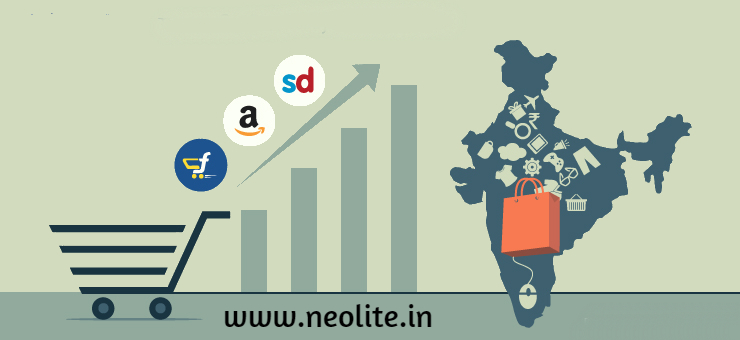The covid pandemic during recent years caused the country to be transformed by the digital system. Consumers began to use digital ways of satisfying their demands due to lack of choice or concerns about safety or simply plain comfort. This behavioral change boosted India’s e-commerce growth. In recent years, the segment has already seen fast growth due to increased penetration of the internet and smartphones, but the pandemic has accelerated this growth by 3 times. All items were now purchased online, from foodstuffs to clothes to books to personal care products. In the next 3-5 years, Indian e-commerce will reach USD 200 billion.
Interestingly, consumer behavior has undergone massive changes at a very basic level. The majority of them started to adopt new ways of shopping online, first of all, but soon this became a habit as everything was at your door, and because of the ease of sitting at home. It caused a chain reaction – from products, services, brands, and categories – to all around.
For marketers like us, consumers are the centre of our universe and it is therefore essential that we take a closer look at how e-growth commerce has changed their lives. We have carried out an online survey to find out about the shopping behaviour and models of the consumer.
Key takeaways for brands & businesses in the e-commerce space –
1) The path to purchase is indefinite & complex –
In the digital environment, the number of touchpoints for consumers has increased and there are also numbers of ways in which a brand is present, innovates and interactive. Consumers on average use four platforms before taking their decisions, according to a recent Amazon report. More than half of the consumers visit Amazon in a research context that suggests that the platform is not just a place of buy/action on the consumers’ journey. The journey between the purchase and trigger is, according to a study conducted by Google, a messy center that consists of an exploration and assessment process.
The loop can only be broken by a brand that is present at the right touchpoint, which provides adequate information for quick assessment. An important post-pandemic marketing tool is the advertising of products or services on Amazon and Flipkart. The advertising should not only be about conversion goals but should also involve driving consumers through the funnel. Brands must also ensure that the commercial messages are tailored to the needs of buyers during the assessment phase. According to a study by Google, our shopping decisions are influenced by behavioural distortions. We must put our messages in line with our prerequisites and categories.
2) Grocery Shopping : A clear winner!
When it came to knowing the major categories which were a benefit to E-commerce, Grocery came out as a clear winner as per the poll findings. The availability of products on food applications and websites leads to the consumers becoming loyal to this platform. Consumers also have a significant tendency to buy from local establishments, known shops, and brands. The User Interface experience makes a difference in terms of the choice of a consumer. In certain cases, users said that Zomato and Swiggy are distinguished by using their user interfaces. The game may be changed using a simple, self-oriented, and rigorous UI.
3) Brands with a purpose
The worldwide epidemic raised the notion of the purpose of a firm or the notion of a meaningful business – how companies return their products to the community and the world. Between 2020 – 2021, there have been several major shifts. According to a Google study, 86 percent of respondents said the epidemic has made them more aware of the environment.
Consumers have broadened their perspectives and hence can choose more, and evermore. It takes only one downfall to learn for life, as it accurately says. 70 percent of respondents reported utilizing durable brands after the epidemic. According to our poll, It has become vital to give your brand a greater purpose.
4) A shift towards Digital payments –
In October 2020, according to the current KPMG research, digital transactions surged to roughly 23.7 million crores. Our poll showed that 70% of respondents prefer to purchase online using digital payment methods. Indians feel safer in the course of actual cash transactions than digital payments according to prevailing consumers.
The results suggest that customer tastes have changed dramatically. It is quite obvious that today’s customers are experimenting with and exploring various financial transaction platforms. Brands in this field must be highly aggressive in establishing strategic alliances with Fintech platforms.
In summary, today’s eCommerce firms can no longer be complacent. Today, consumers are intelligent and educated and have high brand expectations. Today’s e-commerce business has far more touches, a lot more prospective customers, and a difficult trip towards consumers. Let’s get on and better adjust!


 WhatsApp us
WhatsApp us